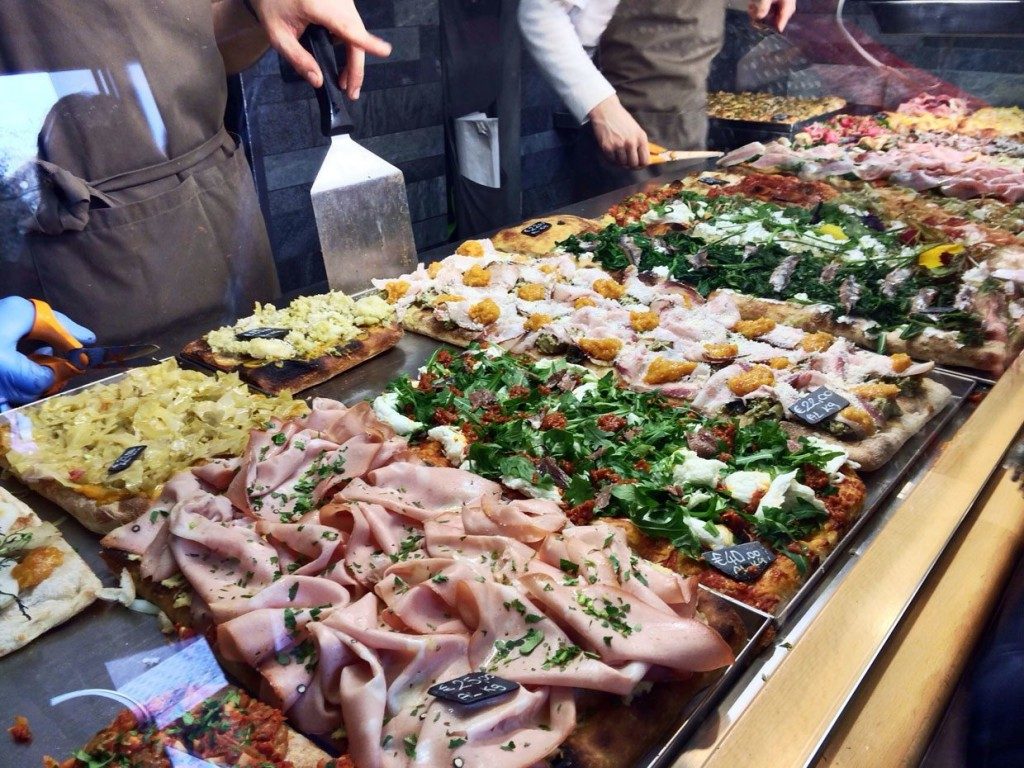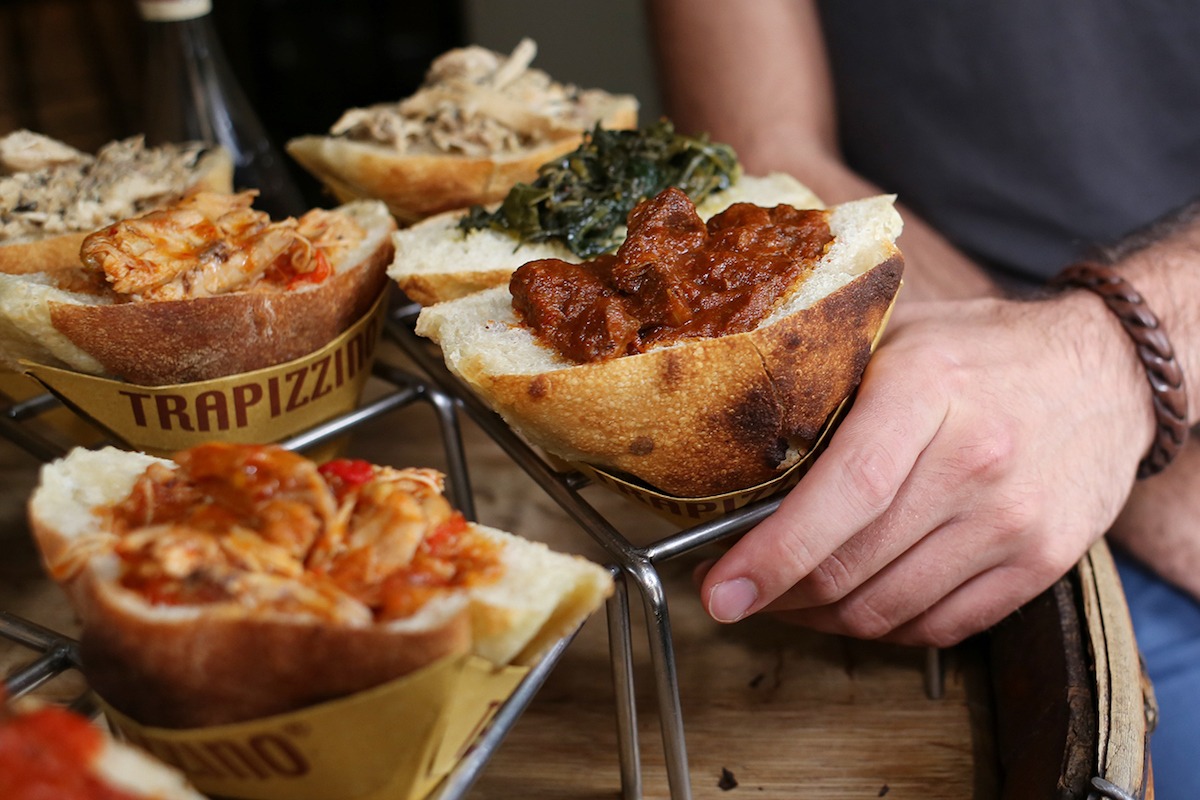Embark on a tantalizing culinary journey through the vibrant streets of Rome, where food is not merely sustenance but an art form. Rome street food embodies the city’s rich history, diverse culinary traditions, and infectious passion for life. From savory bites to sweet indulgences, prepare to be captivated by the flavors that define this gastronomic paradise.
Delve into the bustling markets, charming trattorias, and hidden gems that serve up an array of delectable treats. Discover the secrets behind iconic dishes like supplì, pizza al taglio, and maritozzi, and learn about the passionate vendors who bring these culinary creations to life.
Street Food Culture in Rome
Rome’s street food culture is a vibrant and integral part of the city’s culinary landscape. With a history dating back to ancient times, street vendors have played a crucial role in feeding the city’s populace, offering a diverse array of affordable and delicious snacks and meals.
Historical Roots and Significance
The origins of street food in Rome can be traced back to the Roman Empire, when street vendors sold simple fare such as bread, olives, and cheese to the city’s inhabitants. Over the centuries, the street food scene evolved and expanded, incorporating influences from various cultures and traditions.
Today, Roman street food is a testament to the city’s rich culinary history and its ongoing cultural diversity.
Culinary Traditions and Influences
Roman street cuisine is characterized by its use of fresh, seasonal ingredients and its reliance on traditional cooking methods. Many dishes are made with simple ingredients, such as pasta, vegetables, and meat, but they are elevated by the use of flavorful sauces, herbs, and spices.
Roman street food also reflects the city’s multicultural heritage, with influences from Jewish, Arab, and North African cuisines evident in many dishes.
Social and Cultural Aspects
Street food in Rome is not just about sustenance; it is also a social and cultural experience. Street vendors often become familiar faces in their neighborhoods, and their food becomes a part of the local community. Eating street food is a way for Romans to connect with their city and with each other.
It is also a way for visitors to experience the authentic flavors and traditions of Rome.
Popular Street Food Items

Rome’s street food scene is a vibrant and diverse affair, offering a tantalizing array of flavors to satisfy every palate. From savory snacks to sweet treats, there’s something for everyone to enjoy. Here’s a comprehensive guide to the most popular street food dishes in the Eternal City:
Savory Delights
- Suppli: These golden-fried rice balls are filled with a flavorful combination of ground meat, vegetables, and cheese, creating a satisfying and savory treat.
- Pizza al Taglio: This rectangular-shaped pizza is sold by weight and comes in various toppings, making it a convenient and customizable snack.
- Arancini: These Sicilian rice balls are coated in breadcrumbs and fried, filled with a variety of fillings such as meat, cheese, or vegetables.
- Trapizzino: This innovative street food combines pizza dough with traditional Roman fillings, creating a pocket-sized treat that’s both savory and satisfying.
Where to Find the Best Street Food: Rome Street Food
Rome is a city renowned for its culinary delights, and street food is an integral part of the Roman dining experience. From bustling markets to hidden alleyways, there are countless places to find delicious and affordable street food in Rome.
Some of the best neighborhoods for street food in Rome include Trastevere, Testaccio, and Monti. These areas are known for their vibrant atmosphere and abundance of street food vendors. In Trastevere, you can find everything from classic Roman dishes like supplì and pizza al taglio to international fare like kebabs and tacos.
Testaccio is home to the famous Mercato di Testaccio, a large market where you can find a wide variety of street food, including fresh produce, cheese, and cured meats. Monti is a charming neighborhood with a number of small trattorias and cafes that serve delicious street food.
In addition to these neighborhoods, there are a number of specific streets in Rome that are known for their street food offerings. Via della Scrofa, located in the historic center of Rome, is lined with restaurants and bars that serve traditional Roman dishes like pasta alla carbonara and cacio e pepe.
Via del Governo Vecchio, also in the historic center, is known for its numerous pizzerias that serve pizza al taglio by the slice.
No matter where you choose to go, you’re sure to find delicious street food in Rome. The atmosphere is always lively and friendly, and the food is always fresh and affordable. So next time you’re in Rome, be sure to explore the city’s street food scene.
Recommended Street Food Vendors
Here are a few of the most popular street food vendors in Rome:
- Supplizio (Trastevere): Known for their delicious supplì, a fried rice ball filled with mozzarella cheese and tomato sauce.
- Pizza al taglio (Via del Governo Vecchio): A popular spot for pizza by the slice, with a variety of toppings to choose from.
- Gelateria del Viale (Testaccio): A renowned gelateria that serves delicious gelato and sorbet.
- Mercato di Testaccio (Testaccio): A large market where you can find a wide variety of street food, including fresh produce, cheese, and cured meats.
- Formello (Monti): A small trattoria that serves traditional Roman dishes like pasta alla carbonara and cacio e pepe.
Cooking Roman Street Food at Home

If you’re a fan of Roman street food, you can recreate the authentic flavors of these dishes in your own kitchen. Here are some recipes for popular Roman street food items, along with step-by-step instructions and tips for authentic preparation.
Suppli al Telefono, Rome street food
- Ingredients:
- 1 cup Arborio rice
- 1/2 onion, chopped
- 1/4 cup dry white wine
- 4 cups chicken broth
- 1/2 cup grated Parmesan cheese
- 1/4 cup chopped fresh parsley
- 1 egg, beaten
- 1/2 cup breadcrumbs
- Vegetable oil, for frying
- Instructions:
- In a large saucepan, sauté the onion in a little bit of oil until softened.
- Add the rice and stir to coat with the oil.
- Add the white wine and let it cook until reduced by half.
- Gradually add the chicken broth, one cup at a time, stirring constantly.
- Once the rice is cooked through, stir in the Parmesan cheese, parsley, and egg.
- Spread the rice mixture onto a baking sheet and let it cool completely.
- Once the rice is cold, form it into small balls.
- Roll the rice balls in the breadcrumbs.
- Heat the oil in a large skillet over medium heat.
- Fry the rice balls until golden brown on all sides.
- Serve the suppli al telefono hot with your favorite dipping sauce.
Pizza Bianca
- Ingredients:
- 1 pound pizza dough
- 1/2 cup olive oil
- 1/2 cup chopped fresh rosemary
- 1/4 cup chopped fresh thyme
- 1/4 cup grated Parmesan cheese
- Salt and pepper to taste
- Instructions:
- Preheat oven to 500 degrees F (260 degrees C).
- Stretch the pizza dough into a 12-inch circle.
- Brush the dough with olive oil.
- Sprinkle the dough with rosemary, thyme, Parmesan cheese, salt, and pepper.
- Bake the pizza for 10-12 minutes, or until the crust is golden brown and the cheese is melted and bubbly.
- Let the pizza cool for a few minutes before slicing and serving.
Gelato
- Ingredients:
- 1 cup whole milk
- 1 cup heavy cream
- 1/2 cup sugar
- 1/4 cup corn syrup
- 1 teaspoon vanilla extract
- 1/2 teaspoon almond extract
- 1/4 teaspoon salt
- Instructions:
- In a medium saucepan, combine the milk, cream, sugar, corn syrup, vanilla extract, almond extract, and salt.
- Bring the mixture to a simmer over medium heat, stirring constantly.
- Reduce the heat to low and simmer for 5 minutes, or until the mixture has thickened slightly.
- Remove the saucepan from the heat and let it cool completely.
- Pour the mixture into an ice cream maker and churn according to the manufacturer’s instructions.
- Once the gelato is churned, transfer it to a freezer-safe container and freeze for at least 4 hours before serving.
Street Food Tours and Experiences

Rome is a paradise for street food enthusiasts, and guided tours offer an immersive way to explore this vibrant culinary scene. These tours provide a unique opportunity to sample a wide variety of authentic Roman street food, while learning about the city’s rich culinary history and culture.
Various types of street food tours are available, each with its own unique features. Some tours focus on specific neighborhoods, while others explore the city’s hidden culinary gems. There are also tours that cater to specific dietary restrictions, such as vegetarian or gluten-free options.
Benefits of Taking a Street Food Tour
- Authentic culinary experience:Tours take you to the best street food vendors, ensuring you taste the most authentic and delicious Roman dishes.
- Cultural immersion:Street food is an integral part of Roman culture, and tours provide an opportunity to interact with locals and learn about their culinary traditions.
- Historical insights:Many tours offer historical context about the street food dishes and the neighborhoods where they are served.
- Convenience and efficiency:Tours eliminate the hassle of researching and finding the best street food spots, allowing you to relax and enjoy the experience.
Popular Questions
What is the most popular street food in Rome?
Suppli, pizza al taglio, and maritozzi are among the most beloved street food dishes in Rome.
Where can I find the best street food in Rome?
Explore the neighborhoods of Trastevere, Monti, and Testaccio for a wide variety of street food options.
Can I take a street food tour in Rome?
Yes, there are several guided street food tours available that take you to hidden gems and introduce you to local vendors.
